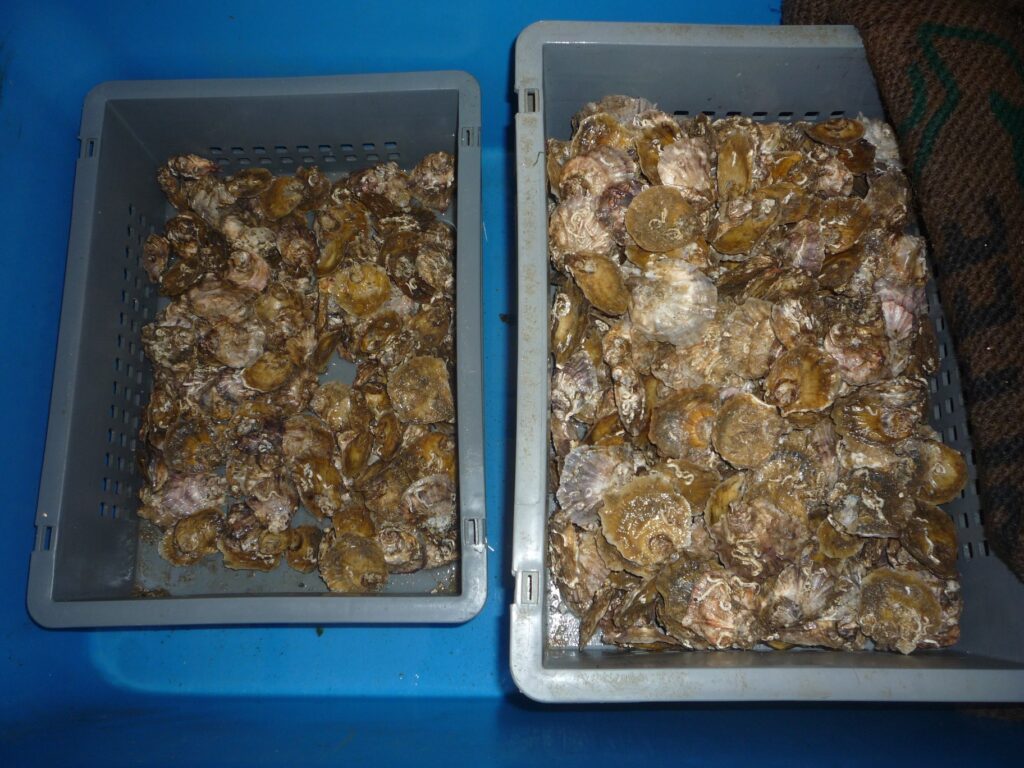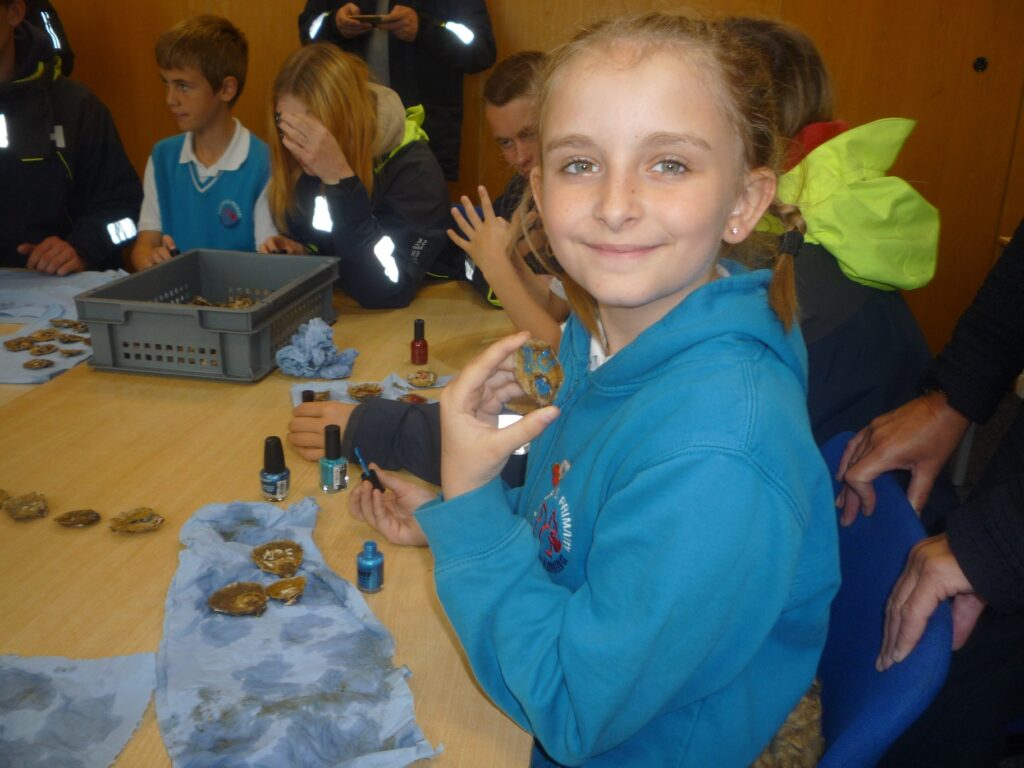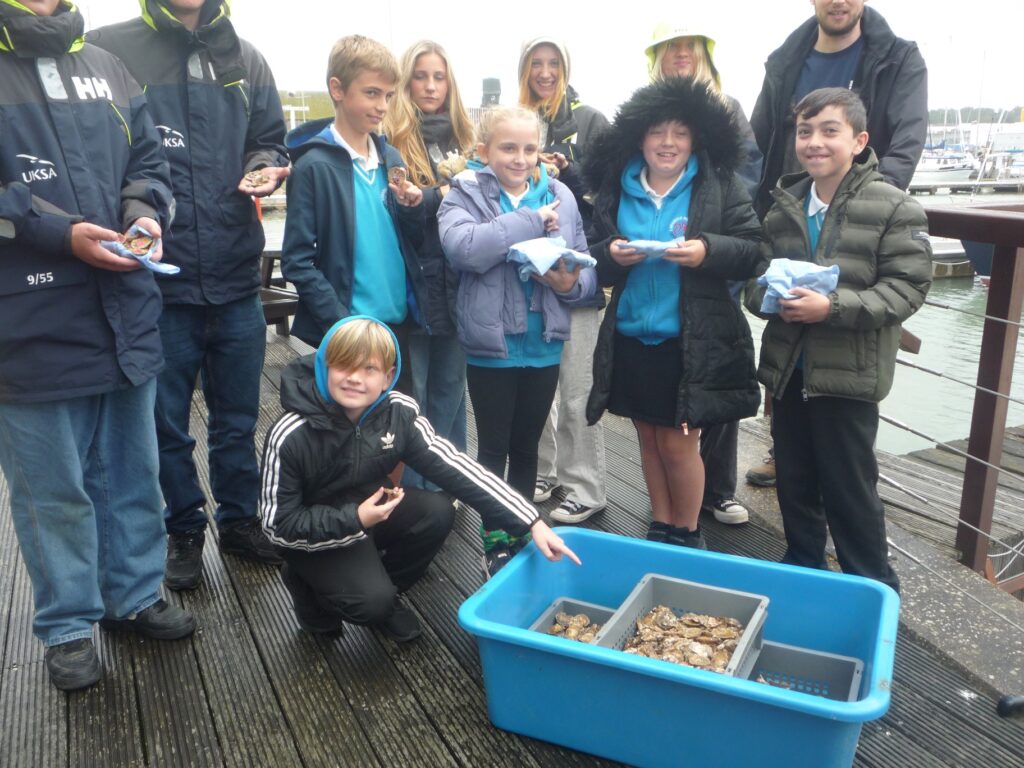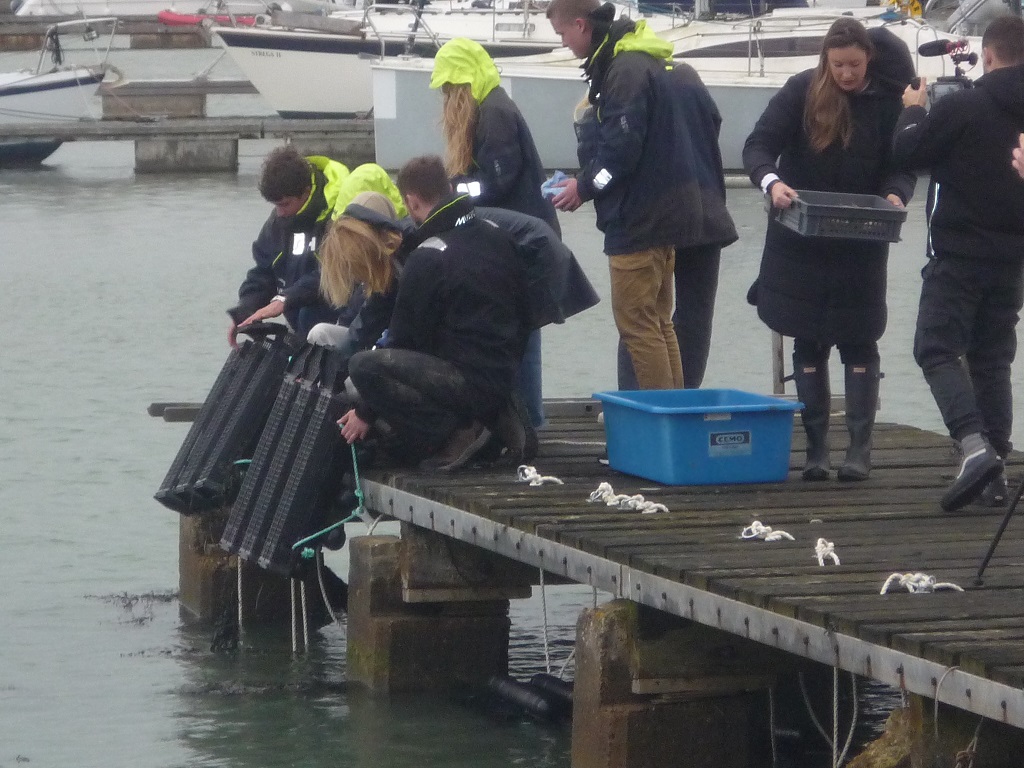
In January, the Blue Marine Foundation launched the Solent Seascape Project aiming to regenerate the native oyster population over the next five years.
On Wednesday, the first batch of 1000 juvenile oysters, sourced from the West Coast of Scotland were placed in their new home at the UKSA in Cowes, under their pontoons.
Project manager Eric Scott- Harris was assisted by current UKSA Sea.Change (SIC) students and five pupils from year six of local primary school, Lanesend.
Bella , who is a Guide with the 1st Gurnard Unit was one of the year 6 students selected to undertake the “Oyster” project.

Prior to introducing the young oysters, Eric explained they had all been screened so as not to introduce any diseases. 50 oysters of the intake were given special markings so the UKSA students can easily undertake regular surveillance of the sample batch.
There are no immediate plans to harvest any of the stock because they must first become established in their new homes. As well as improving water quality, native oysters are designated as ecosystem engineers that act as a natural defence to coastal erosion.
Oysters start to reproduce when they are about two years old, and a single oyster can produce up to 100 million eggs each year.
These become fertilised in the water, then develop into larvae which eventually find suitable sites to settle on, known as an oyster bed or reef.
With common predators such as crabs, seabirds and starfish- even humans- it is no wonder so many young need to be produced.
Native oysters inhabit the sub-tidal areas while the interloper Pacific Oyster-unwisely introduced about a century ago- is found in the intertidal zone and can withstand dry conditions.
Typically, the native oyster has a lifespan of roughly 10 to 12 years, although in ideal situations they can survive for 28 to 30 years.
Over the five-year project The Blue Marine Foundation will introduce oysters in Solent locations such as Langstone Harbour and the River Hamble.
Historically, the Solent boasted the largest fishery area in Europe for oysters, with some 50 million available. Oysters were certainly on Isle of Wight menus in Roman times, dozens of oyster shells have been found at both Newport and Brading Roman Villas, and Oysters were the food of the people In the Victorian era.

